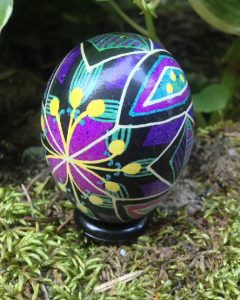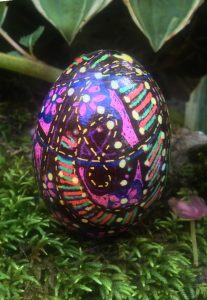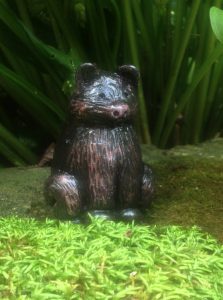This egg was created by reinforcing a blown chicken egg with some left over polymer clay, a fine sheet rolled out, then cut and molded around the whole egg. Pin hole placed in the end to let air escape during curing.
After curing the first time, two different flower canes were applied to the outside, and smoothed around the edges and sides with a brayer, then cured again. The flowers were added to the inside by sculpting with “memory” polymer clay, which has flower petals ground into it… specifically to commemorate some special event. So many of these keepsakes are customized for individuals who wish to remember someone or something. You can see other memory items made with polymer clay HERE.


 HERE
HERE





